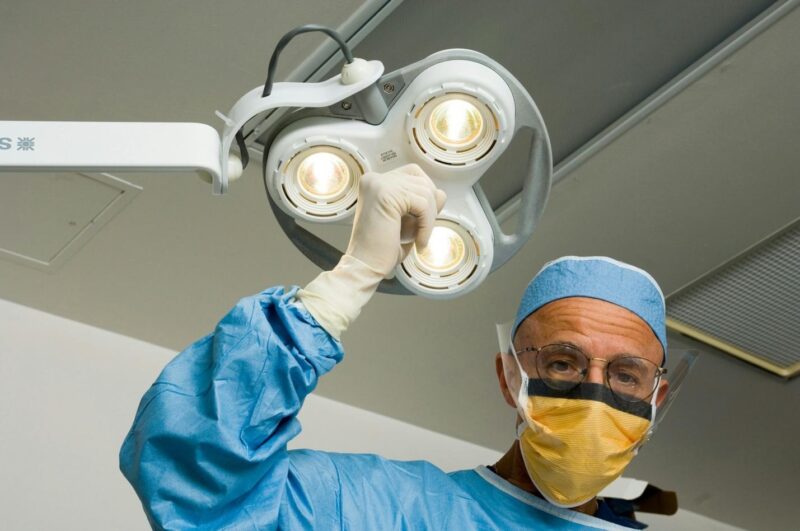
Cataracts are a leading cause of vision impairment globally, characterized by the clouding of the eye’s natural lens. This condition develops gradually, subtly interfering with the passage of light to the retina. As the lens becomes increasingly opaque, it scatters light, leading to a progressive and often painless decline in visual quality. Understanding the mechanism behind this impairment and recognizing its early warning signs is crucial for timely intervention and preserving sight.
Read on to learn the seven early signs to watch when cataracts impair vision.
The Mechanism: How a Clouded Lens Disrupts Sight
The eye’s lens is normally clear, functioning like a camera lens. It focuses light onto the retina, sending sharp images to the brain. A cataract forms when proteins within the lens clump together, creating a cloudy area. This cloudiness can prevent light from passing through unimpeded, causing vision to become blurry or hazy. It’s akin to looking through a foggy or dusty windshield. This light scattering can also lead to increased glare, diminished color vibrancy, and poor night vision.
Therefore, for individuals considering treatment in Singapore or similar locations, understanding the cataract surgery cost Singapore can be a common part of the decision-making process, alongside evaluating a surgeon’s expertise and technology.
Signs of Cataracts to Watch Out For
Cataracts develop slowly, and their early signs are often subtle. Recognizing these initial symptoms is crucial for timely diagnosis and treatment. Some key indicators include:
Early Sign 1: Blurred or Cloudy Vision
The most common initial symptom is a gradual blurring of vision. Individuals may notice that their eyesight seems foggy, filmy, or less sharp. Small print becomes harder to read, and the world may lack definition. This blurriness can’t be corrected with new glasses or contact lenses, as the problem originates within the lens itself, not from a refractive error. Cloudiness also typically starts in a small area of the lens and expands over time.
Early Sign 2: Increased Sensitivity to Glare
A significant increase in sensitivity to light and glare is a hallmark early warning sign. Oncoming headlights during night driving may become painfully dazzling, creating a halo or starburst effect around the light source. Bright sunlight can also cause discomfort. This occurs because the cloudy lens scatters incoming light instead of focusing it neatly onto the retina. This symptom is particularly dangerous as it can severely impair driving ability at night.
Early Sign 3: Frequent Changes in Eyeglass Prescription
Individuals with developing cataracts often need new eyeglass prescriptions more frequently. Vision clarity may fluctuate, sometimes even improving slightly in a phenomenon known as “second sight,” where the cataract temporarily changes the eye’s focusing power. However, this is short-lived. As the cataract matures, vision will deteriorate again, making stable correction with glasses impossible.
Early Sign 4: Fading or Yellowing of Colors
Cataracts can act as a filter, causing colors to appear faded, dull, or washed out. A once-vibrant red may seem muted, and the world may take on a yellowish or brownish tint. This occurs because the cloudy lens blocks and alters the passage of light wavelengths responsible for color perception. The change is typically so gradual that it goes unnoticed until after cataract surgery, when patients are amazed by the true brilliance of colors.
Early Sign 5: Poor Night Vision
As cataracts progress, seeing in low-light conditions becomes exceedingly difficult. Activities like reading in a dimly lit room or walking in a darkened hallway can become challenging. This decline in night vision is coupled with increased glare, making any nighttime activity, especially driving, hazardous. The pupil dilates in the dark to let in more light, but the clouded lens prevents that light from being properly focused.
Early Sign 6: Double Vision in One Eye
Diplopia, or seeing double images with one eye, can be a disconcerting early symptom of a cataract. This is distinct from double vision caused by misalignment of the eyes, which typically resolves when one eye is closed. Cataract-induced double vision can persist even when the other eye is covered. It results from the irregular refraction of light through the unevenly clouded sections of the lens, splitting a single object into multiple images.
Early Sign 7: Seeing Halos Around Lights
The scattering of light by the cloudy lens typically causes the appearance of halos or rings around light sources. Streetlights, lamps, and car headlights may all be surrounded by a diffuse, glowing circle. This symptom is directly related to increased glare sensitivity and significantly contributes to visual discomfort and difficulty with night driving.
When to Seek Professional Evaluation
Anyone experiencing these symptoms should schedule a comprehensive eye examination with an optometrist or ophthalmologist. Early detection is key. If these signs sound familiar, consider booking with a community optometry clinic in Hernando, Mississippi for a thorough cataract evaluation and guidance on next steps. A professional can diagnose cataracts through a dilated eye exam, assess their impact on vision, and rule out other potential causes for the symptoms. Regular eye exams are also essential, especially for individuals over 40 or those with risk factors like diabetes, prolonged sun exposure, or a family history of cataracts.
Conclusion
Cataracts impair vision by clouding the eye’s natural lens, leading to blurred vision, glare, and faded colors. Recognizing these early signs is the first step toward addressing the condition. While the initial management may involve stronger lighting or anti-glare glasses, the only definitive treatment is surgical intervention. Modern cataract surgery is a highly successful and safe procedure that involves removing the clouded lens and replacing it with a clear artificial intraocular lens, effectively restoring clear vision.












